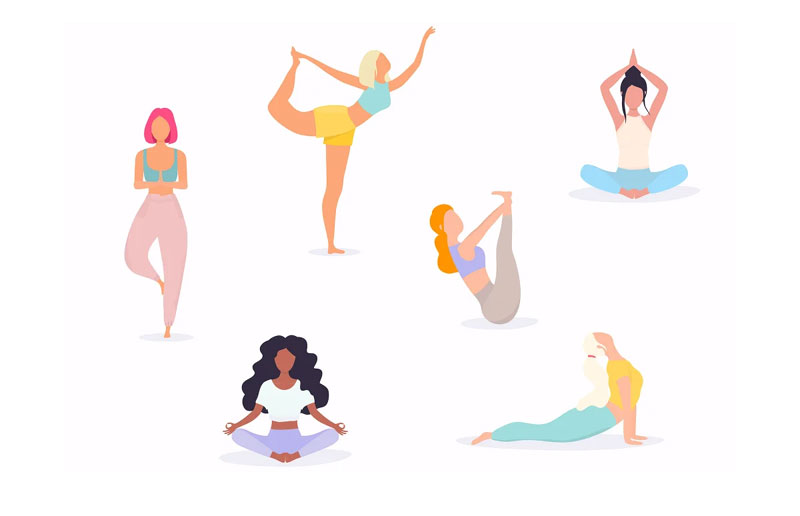"Calming the mind is yoga. Not just standing on the head."
-Swami Satchidananda
There are many great reasons to add yoga to your exercise routine. Yoga improves muscle tone, flexibility, and balance, and it helps you relax and reduce stress, thanks in part to its signature pranayama breathing. Research have also shown that yogic practices also reduce stress, anxiety, depression, and chronic pain; help you sleep better; and enhance overall well-being and quality of life.
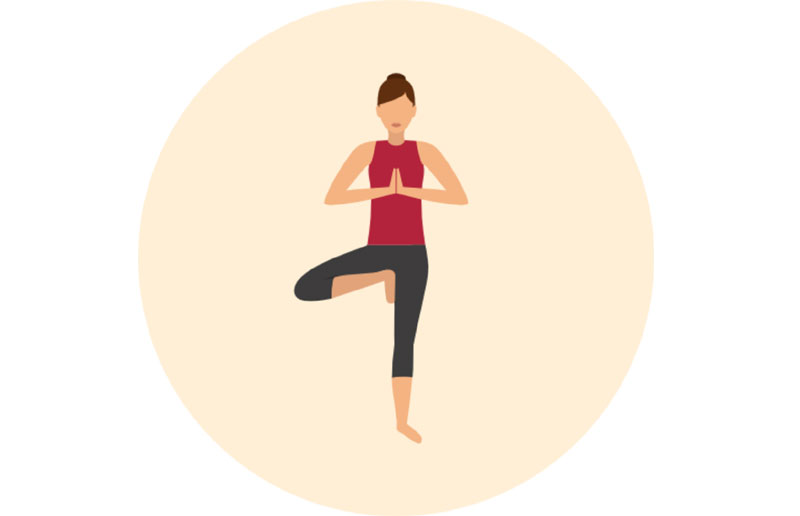
Yoga improves strength, balance and flexibility
Slow movements and deep breathing increase blood flow and warm up muscles, while holding a pose can build strength.
Tree PoseBalance on one foot, while holding the other foot to your calf or above the knee (but never on the knee) at a right angle. Try to focus on one spot in front of you, while you balance for one minute.
Yoga helps with back pain relief
Yoga is as good as basic stretching for easing pain and improving mobility in people with lower back pain. The American College of Physicians recommends yoga as a first-line treatment for chronic low back pain.
Cat-Cow PoseGet on all fours, placing your palms underneath your shoulders and your knees underneath your hips. First, inhale, as you let your stomach drop down toward the floor. Then, exhale, as you draw your navel toward your spine, arching your spine like a cat stretching.
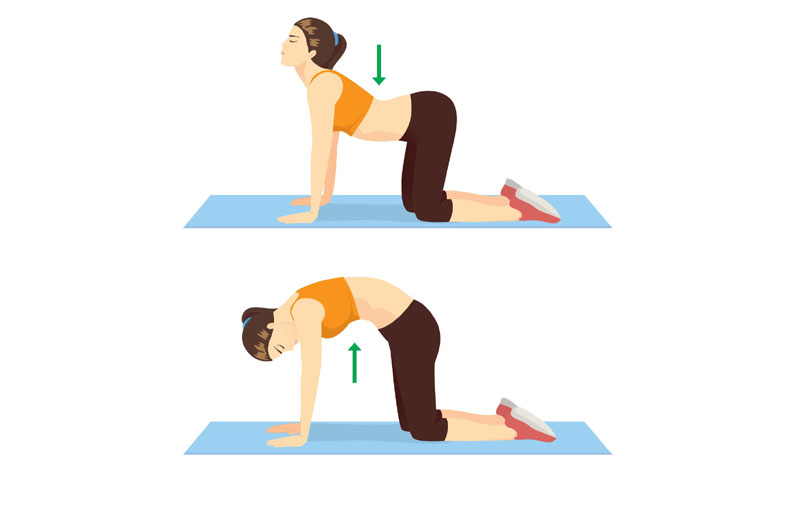
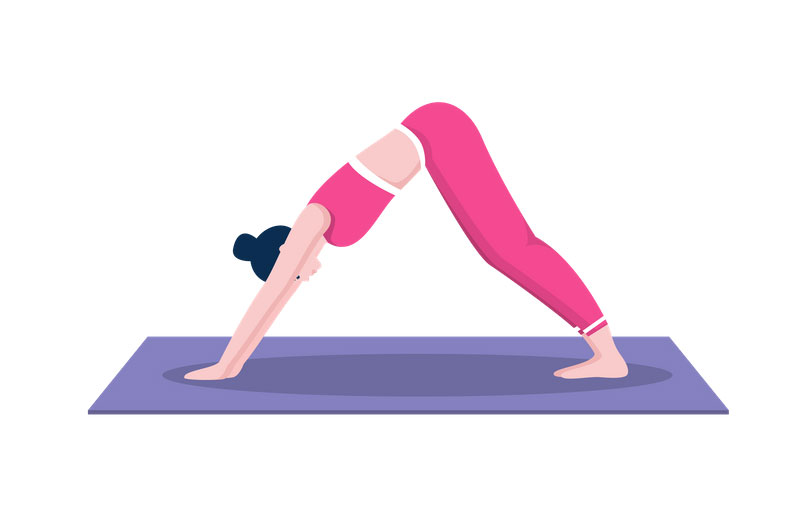
Yoga benefits heart health
Regular yoga practice may reduce levels of stress and body-wide inflammation, contributing to healthier hearts. Several of the factors contributing to heart disease, including high blood pressure and excess weight, can also be addressed through yoga.
Downward Dog PoseGet on all fours, then tuck your toes under and bring your sitting bones up, so that you make a triangle shape. Keep a slight bend in your knees, while lengthening your spine and tailbone.
Yoga relaxes you, to help you sleep better
Research shows that a consistent bedtime yoga routine can help you get in the right mindset and prepare your body to fall asleep and stay asleep.
Legs Up the Wall PoseSit with your left side against a wall, then gently turn right and lift your legs up to rest against the wall, keeping your back on the floor and your sitting bones close to the wall. You can remain in this position for 5 to 15 minutes.
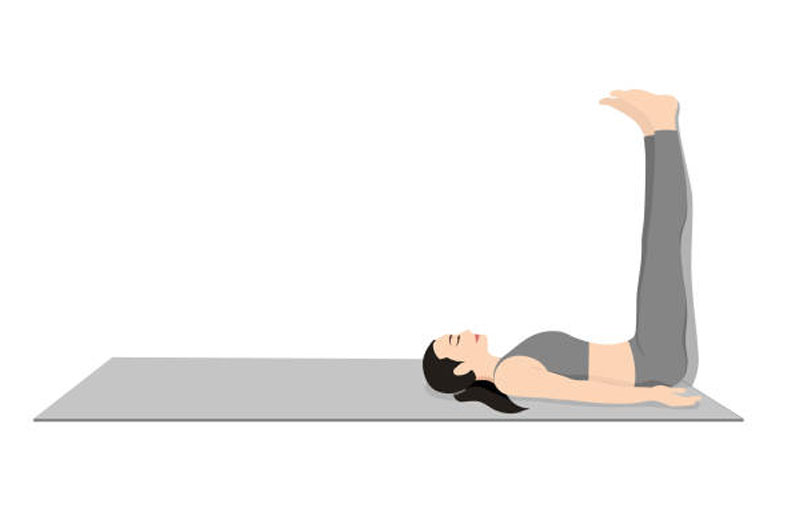
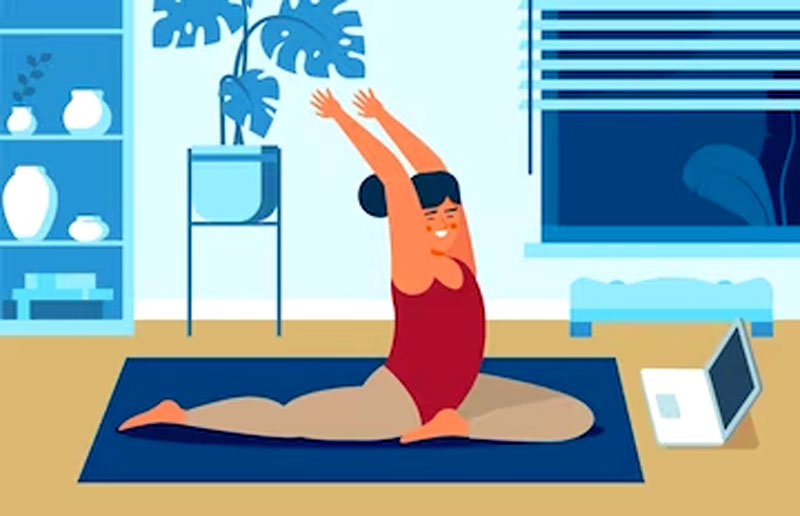
Yoga can mean more energy and brighter moods
You may feel increased mental and physical energy, a boost in alertness and enthusiasm, and fewer negative feelings after getting into a routine of practicing yoga.
Yoga helps you manage stress
According to the National Institutes of Health, scientific evidence shows that yoga supports stress management, mental health, mindfulness, healthy eating, weight loss and quality sleep.
Corpse Pose (Savasana)Lie down with your limbs gently stretched out, away from the body, with your palms facing up. Try to clear your mind while breathing deeply. You can hold this pose for 5 to 15 minutes.
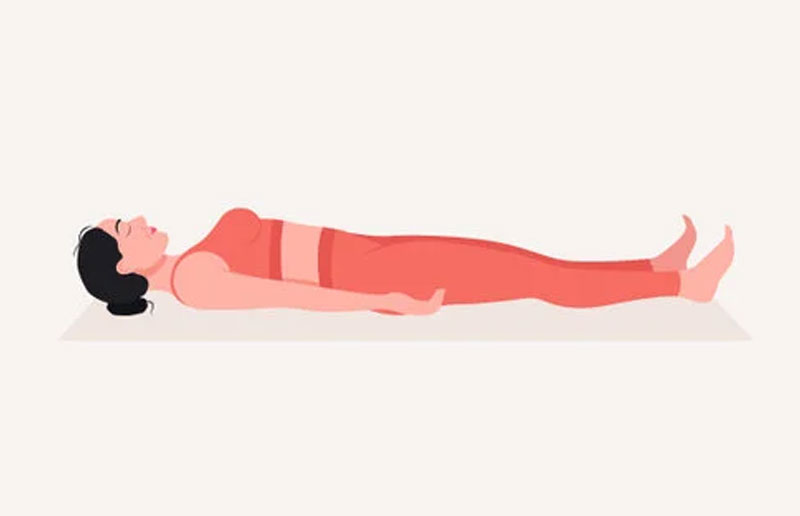
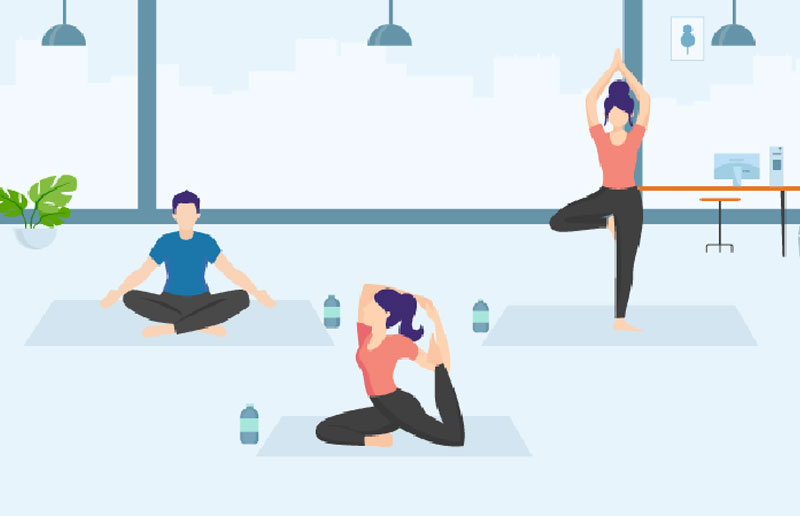
Yoga connects you with a supportive community
Participating in yoga classes can ease loneliness and provide an environment for group healing and support. Even during one-on-one sessions loneliness is reduced as one is acknowledged as a unique individual, being listened to and participating in the creation of a personalized yoga plan.
Yoga promotes better self-care
Scientific Research on Yoga BenefitsThe U.S. military, the National Institutes of Health and other large organizations are listening to - and incorporating - scientific validation of yoga's value in health care.
Numerous studies show yoga's benefits in arthritis, osteopenia, balance issues, oncology, women's health, chronic pain and other specialties.
